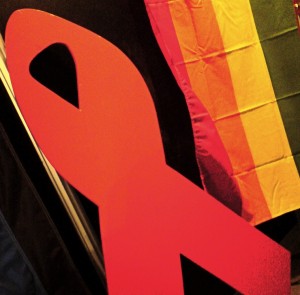Joshua Johnson: Mark, give me some examples of how much you spend on your medications. What do you take? What does it cost you with insurance, and what would it cost retail without insurance?
Mark Trautwein: I currently take 11 prescriptions drugs, a number of over the counter drugs, and some vitamins as well. If I did not have insurance, the retail cost of those medications would be about $45,000 a year. I pay approximately $1,500 a year in co-pays for those medications.
Joshua Johnson: What kind of insurance do you have?
Mark Trautwein: I'm a retired federal employee, so I have my insurance provided through the federal government. I have a Blue Cross/Blue Shield, a kind of standard fee for service plan.
Joshua Johnson: How often -- if at all -- has paying for all of this care become difficult or unnerving?
Mark Trautwein: Part of the definition of living with AIDS is that you're uncomfortable. You're not certain about anything. The future doesn't really belong to you. It's one of the other costs, by the way, of this disease is you lose sense that the future is something you can rely on. You're always uncertain. You never know whether that infection you have is just another flu, like anybody else gets, or whether it's a dagger pointed at your heart.
Joshua Johnson: There are also other costs that go along with your HIV-related care -- generally with being healthy -- doctors visits and blood tests and so on. Even for a relatively healthy person with insurance, a single blood test can be $300-400.
Mark Trautwein: Then there's also the costs of the associated conditions that you may acquire as part of your course with HIV. A big issue for me has been cardiovascular disease that has been totally related, in my case, to having HIV and taking the meds for it. That's put me through five angioplasties over 12 years. Each one of those angioplasties costs up to $60,000. Each one of those, I pay only several thousand dollars each, because I am insured. But the costs of not just your medications, not just your doctor visits, not just your blood tests, but the associated diseases and conditions that also have to be treated can be quite enormous and unknowable until you enter into them.
At this point, time forces Johnson to wrap up the interview, thanking Trautwein and reminding listeners that Trautwein has lived with HIV for 30 years. Mark Trautwein's reply, in an upbeat voice, gave me goosebumps.
"I'm just happy to be here," he said.
More:
Read Mark Trautwein's New York Times Op-Ed piece, Death Sentence that Defined My Life.
If you're living with HIV -- or another costly chronic illness -- share your story with us.
